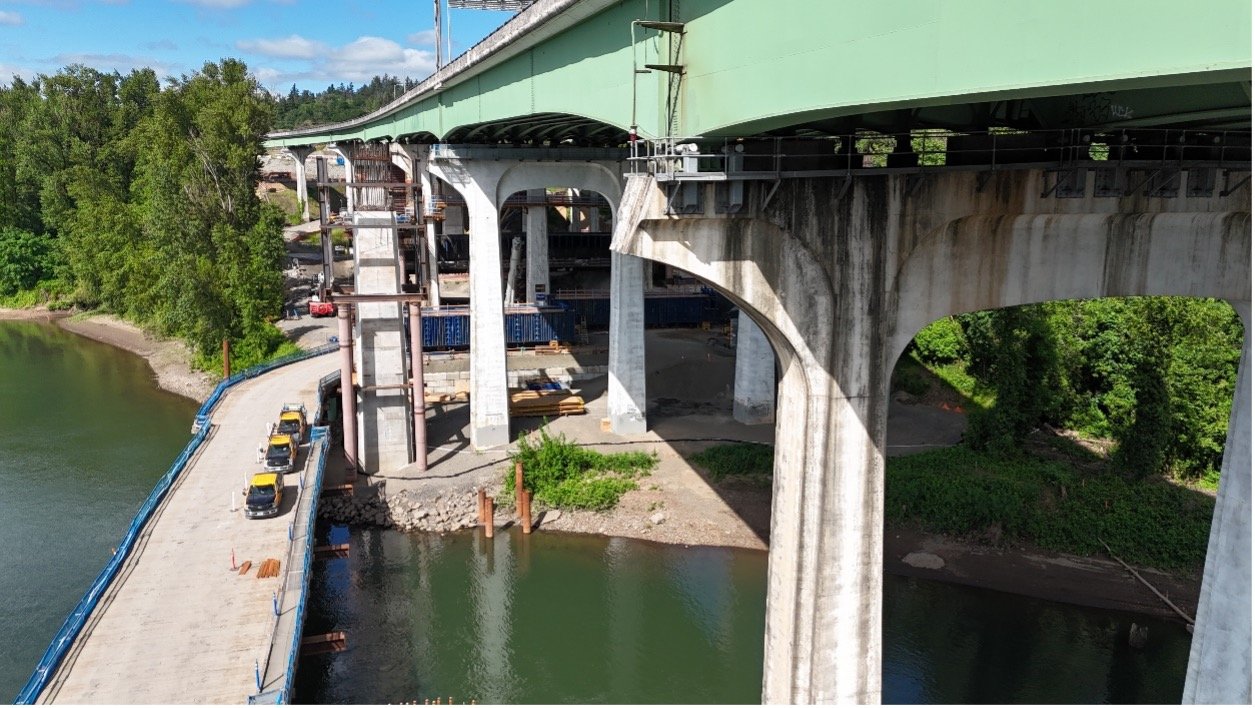Innovative Zip Code Program Exceeding Expectations
The I-205 Abernethy Bridge Project’s status as the Oregon Department of Transportation’s (ODOT) largest construction project in over four decades places it in a unique position. In addition to showcasing many impressive technical feats, the project’s size and prominence allow us to use innovative strategies to fulfill its goals of being a pipeline for developing talent and enabling economic benefits to flow to often-overlooked areas.
The project's key financial mechanism for injecting financial resources into economically distressed areas is its Priority Zip Code Workforce Development Pilot Program—or “Zip Code Program.” This groundbreaking initiative, a partnership with the Federal Highway Administration (FHWA), was launched in 2021. The program focuses on providing individuals living in economically challenged areas a pathway into meaningful employment and developing skills to make economic contributions within their communities.
A new, seismically resilient bridge support column is emerging on the West Linn side of the project area.
Graph depicting project income compared to median wages by county.
One aspect that sets this program apart is the process used to identify the combined 29 targeted zip codes within Clackamas, Marion, Multnomah and Washington counties was rooted in an analysis of multiple local economic and social indicators, as opposed to being gender or ethnicity-based. Some of the factors that were considered when identifying the zip codes were:
Percentage of residents living under 125% of the federal poverty line.
Homeownership rates and historical employment histories.
Percentage of individuals with less than a high school education.
Percentage of employment-age workers living in economically distressed areas.
By providing a hiring preference and workforce development opportunities for apprentices and more experienced journey workers, the program enables access to positions paying above the average wage for Oregon construction workers. Earning these wages allows employees to spend money locally. Since the project’s start, almost $2M has been injected into the targeted zip codes. In addition, roughly $26M has been paid to certified Disadvantaged Business Enterprises, and approximately $920K in wages to Tribal Employment Rights Office referred employees.
So far, the project’s performance is exceeding expectations. The goal was for individuals from these targeted zip codes to generate 8% of the construction project’s overall workforce hours. As of the end of April, individuals from the target zip codes generated 16% of the project’s workforce hours. Additionally, over 70% of the project’s contractors employ at least one person through the Priority Zip Code Hiring Program. ODOT and the FHWA will continually evaluate the performance of the undertaking, but the results seem promising. The Zip Code program is increasing the availability of skilled workers within distressed zip codes and providing a mechanism for local economic uplift.
The I-205 Abernethy Bridge Project is truly a “bridge” in the most expansive sense of the word. Upon completion, it will be a seismically resilient connection across the Willamette River and a bridge to opportunity and regional and local economic development. We think that’s an excellent investment that will pay dividends well into the future.

